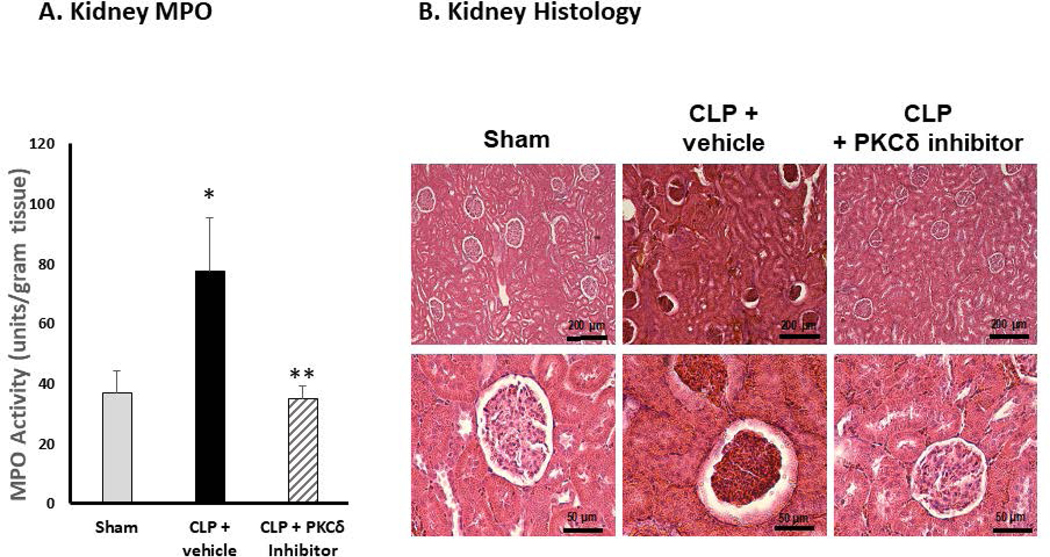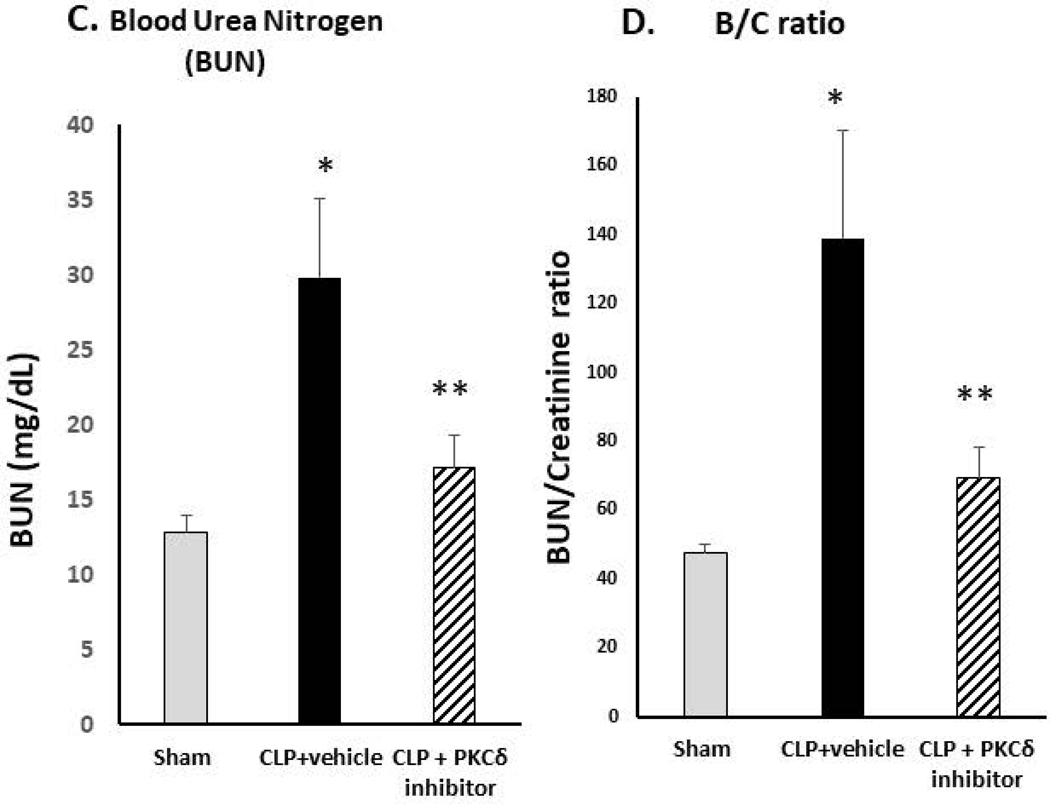Figure 2: PKCδ inhibition reduces neutrophil influx and attenuates acute kidney dysfunction in sepsis.
A. PKCδ inhibition attenuates renal MPO activity in sepsis. MPO activity was measured in kidney tissue homogenates from Sham, CLP+ vehicle or CLP+PKCδ inhibitor treated rats at 24 hr post-surgery. *P< 0.05 Sham vs. CLP+ Vehicle, **P<0.05 CLP+ vehicle vs. CLP+ PKCδ inhibitor, n=5–6 rats/group. B. PKCδ inhibition is protective in sepsis-induced acute kidney injury. H&E staining in representative kidney tissue sections from 24 hours after surgery (3–4 animals per group). In the sham-surgery group, kidney histology was normal with typical architecture of the tubular epithelium and glomeruli. In the CLP + vehicle group, histologic evidence of acute kidney injury was observed including acute tubular lesions with apparent necrosis, widespread hemorrhaging, inflammatory infiltrates and glomerular atrophy. CLP + PKCδ inhibitor; PKCδ inhibition partially protected against sepsis-induced acute kidney injury. While evidence of tubular injury is still apparent, tubular architecture was preserved with reduced inflammatory infiltrate. PKCδ inhibition also preserved glomerular architecture and prevented widespread hemorrhaging and glomerular atrophy observed in the CLP + vehicle group. Scale bars: 200 μm (top row), 50 μm (bottom row). Original magnification: 100x (top row), 400x (bottom row). C. Blood urea nitrogen (BUN) and D. creatinine/BUN ratios were determined 24 hr post-surgery in Sham, CLP+ vehicle and CLP+PKCδ inhibitor treated rats. *P< 0.01 Sham vs. CLP+ Vehicle, **P<0.05 CLP+ vehicle vs. CLP+ PKCδ inhibitor, n=5–6 rats/group


